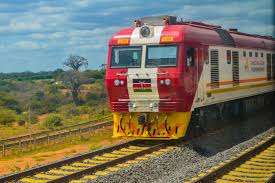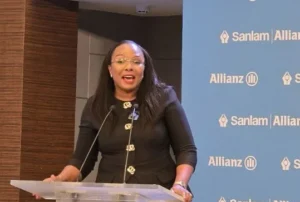
Standard Gauge Railway (SGR) passenger service has recorded over Sh2 billion in ticket sales in the first half of 2025, marking a strong rebound in the number of people using the public transport system despite fare increases that had previously slightly reduced demand.
According to the latest figures released by Kenya Railways Corporation (KRC), the Madaraka Express has generated over Sh2.068 billion in revenue between January and June, representing an 11.65 percent increase from the Sh1.85 billion collected during the same period in 2024.
This growth coincides with a recovery in passenger traffic, which has risen to 1.18 million travelers, up from 1.12 million in the first half of 2024, though still lagging behind the 1.24 million recorded in the year 2023.
The small upward trend comes after fare adjustments introduced on January 1, 2024, which saw first-class tickets on the Nairobi to Mombasa route rising from Sh3,000 to Sh4,500 and economy class fares increasing from Sh1,000 to Sh1,500. The price hike was sparked by escalating fuel costs, which had initially triggered public backlash and a shift toward cheaper road transport alternatives.
Despite price hikes, some passengers believe that SGR service is superior to bus transport. Odhiambo Kizito, a frequent traveler on the Nairobi–Mombasa route, says the SGR remains his preferred choice of transport.
He notes that the train offers greater comfort with more legroom and it is less tiring compared to bus travel, adding that it provides better value for money, making it cheaper and more convenient overall.
“I always use the SGR whenever I’m traveling to Mombasa because, for me, it’s still the cheapest option compared to bus fares, even after the price increase. It’s also more convenient and less tiring because its seat has enough legroom that makes the journey comfortable. When I compare it to buses, the SGR simply has no match in terms of comfort and value,” Odhiambo said.
ALSO READ: KNCCI, KPDA Sign MoU to Unlock Affordable Housing Agenda
KRC had defended the decision to revise fares citing the need to manage rising operational expenses across both inter-county and express services. Despite the initial drop in passenger numbers, the latest data suggests that passengers are gradually returning to rail travel, drawn by the SGR’s speed, safety, and reliability.
The revenue boost is expected to ease pressure on the Treasury, which had previously been tapped to support the railway’s operations. Kenya Railways Corporation has historically relied on government funding to cover costs, including payments to Africa Star Railway Operation Company Limited, the Chinese firm contracted to manage the trains since their launch in 2017.
While the SGR’s passenger and freight services now cover day-to-day operations, they still fall short of generating enough income to repay the substantial loans secured from China to build the railway. Nonetheless, the resurgence in ticket sales comes as the government prepares to extend the SGR line from Naivasha to Malaba, raising hopes for further growth in both passenger numbers and revenue.





